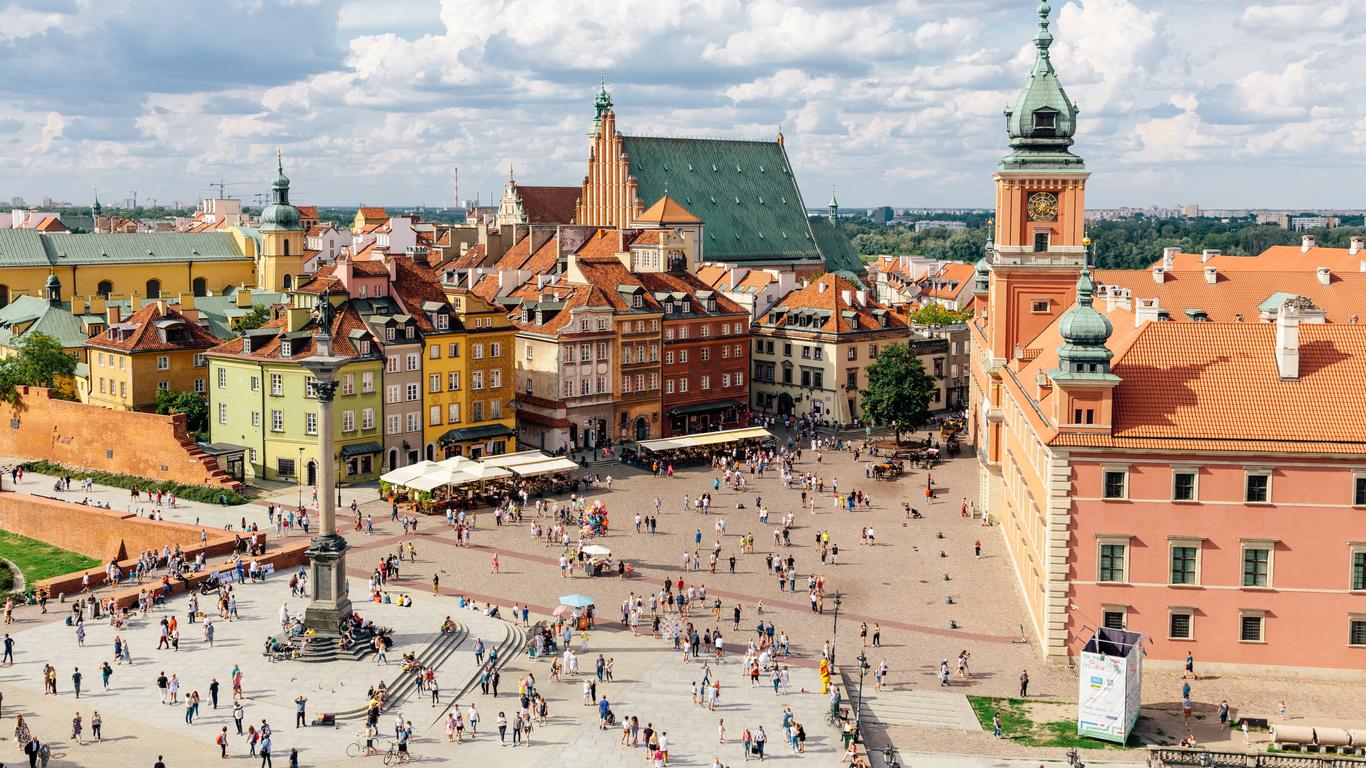Srodmiescie delights in its architectural contrasts, leading visitors through the picturesque lanes of Warsaw Old Town to glamorous parliament buildings and the towering remnants of Stalin’s imagination. Translated into English as “Inner City”, Srodmiescie is the most central district in Poland’s capital and the main focus for visitors to Warsaw. Broad city squares are flanked by domed churches and cafe terraces, royal castles stand beside historic synagogues, and there are over a dozen museums and galleries to discover.
Srodmiescie has always been at the heart of Warsaw, and the Old Town (Stare Miasto) celebrates the design of previous centuries. Cobbled streets extend from the charming Old Town Square, connecting Warsaw’s most iconic attractions. The clip-clop of hooves echoes throughout this area and many people explore the Old Town in a horse-drawn carriage. New Town’s (Nowe Miasto) name is confusing as it was established in the 14th century. It’s a maze of medieval architecture, including the Kotowski Palace and the elegant St. Kazimierz Church. Surrounding the old and new towns are five residential neighbourhoods, Muranow, Srodmiescie Polnocne, Srodmiescie Poludniowe, Powisle and Ujazdow, all with roots in bygone centuries but buildings from post-WWII. An iconic view of the area comes from the observation deck of Stalin’s Palace of Culture and Science.
This central district is also a transport crossroads. The majority of Warsaw’s bus and tram routes pass through Srodmiescie, as do the different lines of the Warsaw Metro. Trains from across Warsaw arrive at Dworzec Centralny, and it’s possible to take a train directly from Warsaw Chopin Airport to stations in Srodmiescie.
A number of excellent museums celebrate the peoples and places of Srodmiescie, including the broad-ranging National Museum and the Warsaw History Museum. Others include the Polish Emigration Museum, Frederic Chopin Museum and the Fotoplastikon, a 3D cinema that dates to 1905.





